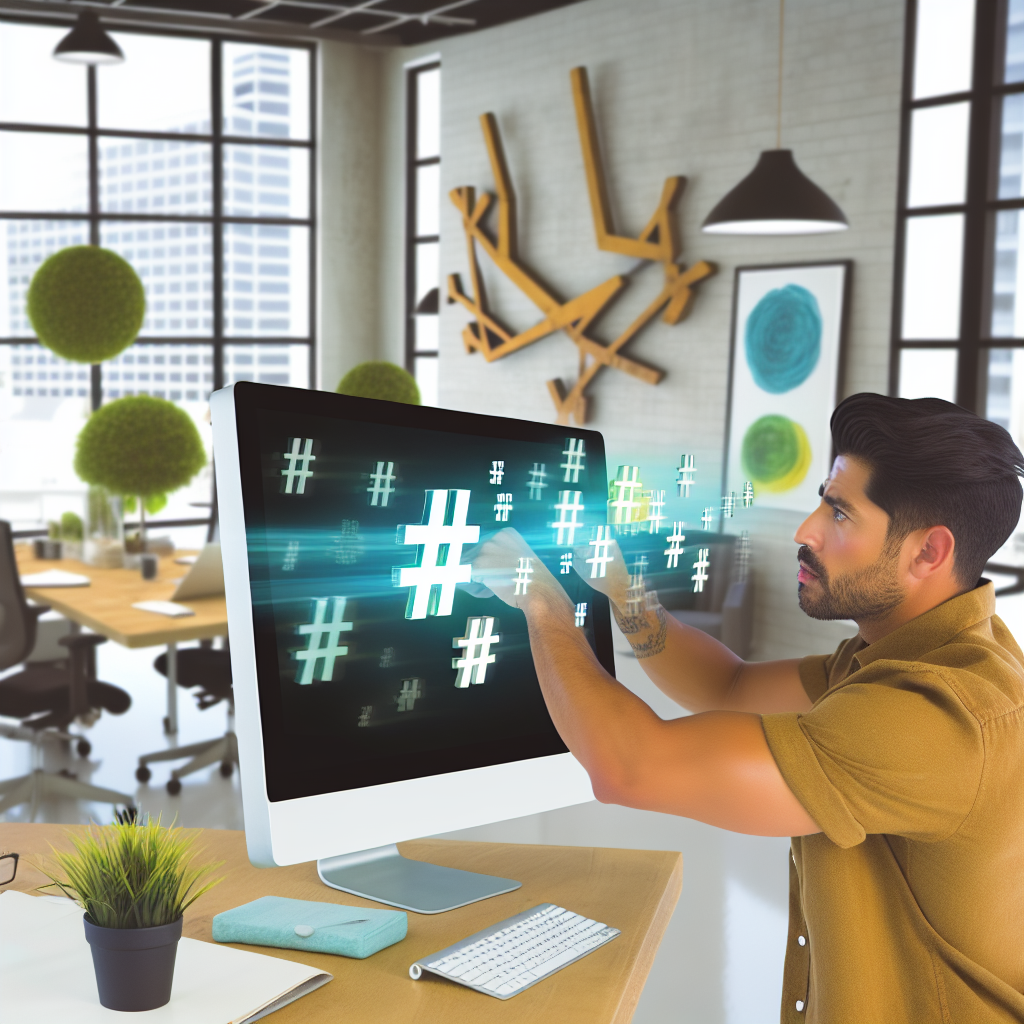Introduction
lets explore augmented reality filters: the new frontier in social media user engagement
Definition of augmented reality (AR) and its relevance in social media
Augmented reality (AR) overlays digital elements onto the real world.
This technology enhances user experiences through interactive visuals.
Social media platforms have quickly adopted AR, transforming how users engage with content.
Overview of the evolution of user engagement on social platforms
User engagement on social platforms has evolved significantly.
Early interactions focused on text and images.
As social media progressed, videos became more popular.
Today, users seek immersive experiences that capture their attention.
AR filters as a game-changer in user interaction
AR filters have emerged as a game-changer in user interaction.
These filters allow users to modify their appearance and surroundings in real-time.
They add playful elements, such as animations and 3D effects.
This interactivity fosters deeper connections with audiences.
Platforms like Instagram and Snapchat have pioneered AR filters.
Users can create and share unique content, boosting creativity.
These features encourage participation and increase time spent on the app.
Consequently, brands are leveraging AR to enhance their marketing strategies.
AR filters drive engagement through gamification.
Users enjoy interacting with filters, sharing their experiences with friends.
This sharing enhances visibility for both users and brands.
More importantly, AR encourages spontaneous sharing, increasing organic reach.
Moreover, AR filters entice users to explore and engage more deeply.
This exploration can lead to greater brand loyalty.
Companies can tailor AR experiences to reflect brand identity, making interactions memorable.
The future of AR in social media looks promising.
As technology advances, experiences will become even more immersive.
Users will likely embrace these evolving tools to express themselves.
The impact on user engagement will continue to grow, changing the social media landscape.
Understanding Augmented Reality Filters
Augmented Reality (AR) filters have transformed the way users interact with social media.
These innovative tools blend digital elements with the physical world.
AR filters enhance photos and videos, making them more engaging.
They work through complex technology that identifies patterns and inputs from the user’s environment.
How AR Filters Work
AR filters utilize a combination of computer vision, machine learning, and graphics rendering.
Here’s a basic breakdown:
- Computer Vision: This technology analyzes real-world images. It recognizes facial features and surroundings.
- Machine Learning: AR filters learn from vast datasets. They improve over time, understanding different environments, lighting, and users.
- Graphics Rendering: Once the AR filter understands the environment, it overlays digital content. This process requires real-time performance for seamless integration.
When a user activates an AR filter, their device’s camera captures their surroundings.
The software detects key points, such as facial landmarks.
We Design & Develop Websites, Android & iOS Apps
Looking to transform your digital presence? We specialize in creating stunning websites and powerful mobile apps for Android and iOS. Let us bring your vision to life with innovative, tailored solutions!
Get Started TodayIt then applies digital assets to these points, creating interactive visuals that respond in real time.
Types of AR Filters
AR filters are diverse and serve various purposes.
Here are some notable types:
- Face Filters: These overlays enhance or modify the user’s appearance. They can add accessories like sunglasses or change facial features.
- Environment Overlays: These filters overlay digital effects onto the user’s environment. Users might see changing backgrounds or animated objects in their surroundings.
- Interactive Games: Some AR filters introduce games and challenges. Users can interact with these elements using gestures or physical movement.
- Artistic Filters: These filters apply various art styles to images. Users can transform their photos into painted works or sketches.
- Brand-Sponsored Filters: Companies create filters to promote products or services. Users can engage with these brand experiences during social media campaigns.
Popular Platforms Utilizing AR Filters
Several social media platforms leverage AR filters to enhance user engagement.
Here are the most popular platforms:
- Instagram: Instagram has become a leader in AR filters. Its various face filters and effects encourage creativity and expression.
- Snapchat: Snapchat pioneered AR in social media. These filters, known as lenses, allow users to add dynamic overlays and effects.
- TikTok: TikTok incorporates AR filters into its short videos. Users can enhance their creativity with effects that complement their videos.
Each platform utilizes AR technology uniquely, attracting users and encouraging interaction.
The continuous addition of new filters keeps the content fresh and engaging.
Understanding these technical aspects and types of AR filters highlights their importance in social media engagement.
AR filters create new experiences and opportunities for brands and users alike.
They serve not only as entertainment but also as tools for self-expression and creativity.
Moreover, the evolution of AR technology is only just beginning.
As computer vision and machine learning advance, AR filters will become even more sophisticated.
Users can expect interactive environments that seamlessly blend virtual and real worlds.
This will redefine digital communication and user engagement across platforms.
In fact, AR filters provide a fascinating intersection of technology and creativity.
They facilitate engagement by transforming ordinary interactions into extraordinary experiences.
As more users become aware of AR capabilities, the demand for innovative filters will likely grow.
This shift will shape the future of social media, making AR filters a critical component of user engagement strategies.
Read: The Impact of Deep Learning on Social Media User Behavior Prediction
Impact of AR Filters on User Engagement
The rise of augmented reality (AR) filters has transformed the landscape of social media.
Brands, influencers, and users now all leverage AR to connect and engage.
This section explores the significant impact AR filters have on user engagement through compelling statistics, successful case studies, and insights into user psychology.
Statistics Showcasing Increased Engagement Rates Due to AR Filters
- Recent studies revealed that posts using AR filters experienced a 70% increase in engagement rates.
- Users spend an average of 1.5 minutes interacting with AR content.
- Instagram reported that over 600 million users engage with AR effects each month.
- Snapchat claims that more than 70% of its daily active users engage with AR features regularly.
- Brands utilizing AR filters have noted a 40% increase in story replies.
These statistics indicate a substantial shift in how users interact with AR filters.
As engagement rates soar, brands recognize the power of incorporating AR into their marketing strategies.
Case Studies of Successful AR Filter Campaigns
Several brands have successfully leveraged AR filters to boost engagement with their audiences.
Here are a few standout examples:
- Nike: Nike launched a campaign for a limited sneaker release, allowing users to try on the shoes virtually. The campaign increased engagement by 50% across their social channels.
- Gucci: The fashion giant introduced an AR filter that lets users try on sunglasses and share their looks. This initiative not only created buzz but also drove significant online sales.
- McDonald’s: The fast-food chain used an AR filter to create a fun experience during the release of a new burger.
Users could interact with animated characters that represented the burger, resulting in a surge in app downloads and social media shares. - Sephora: The cosmetic brand’s AR filter allows customers to test makeup virtually. This approach nurtured customer interest and reduced return rates by 20% due to higher customer satisfaction.
- FaceApp: Though not a brand in the traditional sense, FaceApp popularized AR filters by allowing users to see their aged selves.
The app went viral, attracting millions of users who shared their transformed images.
These case studies highlight the versatility of AR filters across various industries.
Marks recognize the ability of AR to create immersive experiences that captivate audiences.
User Psychology: Why AR Filters Captivate Attention
Understanding user psychology is crucial for maximizing AR filters’ impact.
Several psychological factors contribute to the success of AR filters:
- Novelty: Users are naturally drawn to new experiences. AR filters provide a fresh and exciting way to interact with content.
- Personalization: Users enjoy seeing their faces transformed in fun ways. AR filters allow for personalized experiences that resonate with individual users.
- Social Sharing: The desire to share unique and entertaining moments encourages users to use AR filters. This sharing behavior creates a cycle of engagement among users.
- Playfulness: AR filters introduce an element of playfulness. Users can express themselves creatively and join in on trending challenges, making the experience enjoyable.
- FOMO (Fear of Missing Out): As friends and influencers share AR filter content, others feel compelled to engage and not miss out on the fun.
These psychological factors all work in unison to enhance user engagement.
Brands that understand these principles can design more effective AR filter campaigns that resonate with their target audiences.
Furthermore, AR filters create an emotional connection.
They encourage user-generated content, which amplifies brand presence.
Sharing AR experiences provides a sense of community among users, fostering deeper connections with brands and each other.
We Design & Develop Websites, Android & iOS Apps
Looking to transform your digital presence? We specialize in creating stunning websites and powerful mobile apps for Android and iOS. Let us bring your vision to life with innovative, tailored solutions!
Get Started TodayTherefore, AR filters play a transformative role in shaping user engagement on social media.
As the statistics indicate, the increased interaction rates cannot be ignored.
Brands that have executed successful AR campaigns demonstrate the potential for growth and connection that these filters offer.
Understanding user psychology provides valuable insights into why AR filters captivate attention so effectively.
Businesses that harness the power of AR filters can engage audiences uniquely and memorably.
This new frontier continues to expand, promising exciting opportunities for future marketing efforts.
Read: How AI-Powered Video Editing Software is Transforming Social Media Content Creation
The Role of Brands in Leveraging AR Filters
Augmented Reality (AR) filters have become a vital tool for brands looking to enhance user engagement.
These digital enhancements add an interactive layer to social media platforms, transforming the way users experience brands.
Businesses are increasingly tapping into this modern technology to connect with their audiences.
By leveraging AR filters, brands can create memorable experiences and drive user interactions.
Below, we will explore how brands utilize AR filters, the impact of user-generated content, and best practices for effective implementation.
Examples of Brands Using AR Filters for Marketing Campaigns
Numerous brands have successfully integrated AR filters into their marketing strategies.
Here are some noteworthy examples:
- Face Filters by Snapchat: Brands like Taco Bell and Nike launched custom filters for specific campaigns. These filters encouraged users to share their experiences, amplifying brand visibility.
- Coca-Cola’s Holiday Campaign: Coca-Cola created a festive AR filter that allowed users to transform their surroundings into a winter wonderland.
This engaging experience drove high user participation during the holiday season. - Sephora’s Virtual Try-On: Sephora pioneered AR in beauty retail by allowing users to virtually try on makeup. This filter enhances the shopping experience, increasing customer satisfaction.
- IKEA Place: IKEA’s AR app lets users visualize how furniture would look in their homes. This innovative approach has revolutionized furniture shopping, making it more interactive.
- Pepsi’s “Pepsi Max Unbelievable”: Pepsi launched an AR filter that surprised users with playful animations.
This campaign effectively captured audience attention while driving social media engagement.
Analysis of User-Generated Content and Brand Visibility
AR filters foster user-generated content (UGC), amplifying brand visibility.
When users share their AR-enhanced experiences, brands reap significant benefits.
Here’s how UGC impacts brand visibility:
- Increased Engagement: Users love to share their experiences on social media. When they use branded AR filters, they’re not just engaging with the brand; they’re promoting it to their followers.
- Authentic Brand Representation: UGC allows brands to showcase real customers interacting with their products. This authenticity strengthens credibility and attracts new customers.
- Organic Reach: Shared posts featuring AR content often generate organic reach. Friends and followers trust recommendations from people in their networks, making this powerful.
- Enhanced Brand Messaging: UGC helps brands convey their messages more effectively. It provides a platform for users to express their love for the brand creatively.
- Community Building: Encouraging UGC creates a community around the brand. Users feel valued when they see their contributions showcased, fostering loyalty.
Brands should actively monitor UGC to leverage these benefits.
By engaging with users who share content, brands can strengthen relationships and reinforce their brand identity.
Best Practices for Brands Incorporating AR Filters Into Their Strategies
To fully leverage AR filters, brands should follow these best practices:
- Understand Your Audience: Research target preferences and habits. Tailor AR experiences to user demographics.
- Create Relevant Filters: Design filters that align with your brand. Provide engaging, valuable experiences to captivate users.
- Promote Filter Usage: Encourage users to share experiences. Run campaigns with rewards, contests, or incentives for sharing.
- Monitor and Analyze: Track engagement metrics to evaluate AR filter performance. Use insights to enhance future campaigns.
- Collaborate with Influencers: Partner with influencers to expand reach. Influencers introduce your AR filters to larger audiences.
- Maintain Branding Consistency: Ensure filters reflect your brand identity. Users should recognize your brand within the AR experience.
- Optimize Across Platforms: Customize filters for various social media platforms, considering unique features and user behavior.
- Gather User Feedback: Seek feedback for improvements. User insights help refine and evolve your AR filters effectively.
- Stay Updated: Keep pace with AR technology trends. Emerging advancements can further enrich user experiences.
- Incorporate Clear Calls to Action: Guide users on the next steps within the AR experience to boost conversions.
By applying these practices, brands maximize the impact of AR filters in marketing strategies.
As AR technology progresses, adaptability remains essential for brands to engage users effectively.
AR filters offer brands a new avenue for deeper audience connections, fostering user-generated content and enhancing brand visibility.
When implemented strategically, AR filters enrich social media marketing and foster lasting user engagement with consumers.
Read: Cloud-Based Social Media Management Tools: The Next Frontier for Businesses

The Social Interaction Aspect of AR Filters
Augmented Reality (AR) filters significantly enhance social media interactions.
They allow users to transform their environments and appearances creatively.
These filters contribute to a more engaging and dynamic online experience.
Many users now depend on AR filters to make their content more entertaining.
Filters often serve as a conversation starter, inviting others to join in and react.
How AR Filters Enhance Social Sharing and Interaction
AR filters elevate social sharing in several ways:
- Increased Engagement: Users enjoy using AR filters. This enjoyment translates into increased interactions and sharing.
- Creativity and Customization: Users can express themselves uniquely with various filters. This customization encourages sharing among friends.
- Bridging Distances: Friends can share experiences despite geographical distances. AR filters promote connections that feel immersive.
- Real-Time Interaction: Filters allow for real-time reactions to shared experiences. These spontaneous moments foster a sense of togetherness.
- Memorability: Engaging content is more likely to be remembered. AR filters create lasting impressions on users and their followers.
Moreover, AR filters create opportunities for playful interaction.
Users can challenge one another to try new filters or create themed content.
This playful spirit encourages more sharing, making the experience even more rewarding.
Community Building through Shared Experiences with AR Filters
AR filters play a crucial role in community building across social media platforms.
We Design & Develop Websites, Android & iOS Apps
Looking to transform your digital presence? We specialize in creating stunning websites and powerful mobile apps for Android and iOS. Let us bring your vision to life with innovative, tailored solutions!
Get Started TodayThey facilitate connections and conversations among users who share similar interests.
Here are some ways in which AR filters contribute to community building:
- Common Experiences: Filters often promote specific events or trends. Users can join in and share their experiences, enhancing a sense of belonging.
- Collaborative Challenges: Hashtags and challenges involving AR filters encourage participation. This collaboration strengthens community bonds among users.
- Support for Causes: Many brands create filters to support social causes. Users can engage
with those causes, promoting solidarity among their followers. - Creative Showcases: Users often create compilations of their filtered content. This showcases their creativity and inspires others to participate.
- Inclusive Spaces: AR filters can represent diverse cultures and identities. This inclusivity encourages conversations and connections among different user groups.
These factors ultimately help form a community united by shared experiences and creativity. AR filters allow users to forge deeper connections with one another.
As a result, social media experiences become richer and more rewarding.
Impact on Social Dynamics and Cultural Trends
The rise of AR filters influences social dynamics and shapes cultural trends.
These filters reflect and impact societal norms and behaviors, driving significant changes in how users interact.
Consider the following impacts:
- Influencing Beauty Standards: Many filters enhance physical appearances. This creates a conversation about beauty standards and self-perception.
- Trend Creation and Evolution: AR filters often portray emerging trends. Users quickly adopt and innovate these trends, leading to widespread engagement.
- New Language of Expression: Introduced symbols and styles reshape how users communicate visually. This visual language becomes part of social media culture.
- Shaping Consumer Behavior: Users often engage with brand-specific filters. This engagement influences purchasing decisions and brand loyalty.
- Activism and Awareness: Social issues gain visibility through AR filters. These filters raise awareness, encouraging active participation in social movements.
As AR filters continue to evolve, they will further change social interactions.
Users will likely discover new dimensions to creativity, connection, and community.
The global fascination with AR filters illustrates a significant cultural shift toward digital experiences.
Moreover, AR filters offer unique opportunities for social sharing and interaction.
They foster community building and shape cultural trends, influencing how users engage across platforms.
As social media continues to evolve, AR filters will remain a critical tool in enhancing user experiences.
The potential for even deeper connections and innovative interactions is immense.
Users can expect to see further integration of AR technology in their social media journeys.
Read: Real-Time Data Integration: Revolutionizing Social Media Insights for Enterprises
Challenges and Criticisms of AR Filters
Augmented Reality (AR) filters have rapidly gained popularity in social media.
Despite their engaging features, they come with various challenges and criticisms.
It is essential to examine these drawbacks to understand their broader implications.
Privacy Concerns
One of the most significant challenges associated with AR filters is privacy.
Many users may not realize how much personal data these applications collect.
The implications of such data collection can be troubling.
- Data Collection: AR filters often require access to the camera and user information. This access can lead to extensive data harvesting.
- User Tracking: Companies can track user behavior, preferences, and locations through AR filters. Such tracking raises ethical questions about user consent.
- Facial Recognition: Some filters use facial recognition technologies. This capability can intrude on individual privacy rights.
- Unauthorized Sharing: Users may inadvertently share images with filters. This sharing can lead to the spread of sensitive information.
Misinformation
Another critical concern revolves around the potential for misinformation.
AR filters can distort reality.
This distortion can lead to the creation and spread of false narratives.
- Manipulated Images: AR filters can alter appearances significantly, affecting perceptions of beauty and reality.
- Spread of False Information: Filters that modify images can misrepresent facts. This manipulation can contribute to the spread of misinformation.
- Impacts on Reality: Users may struggle to separate filtered images from unfiltered reality. This confusion can lead to harmful societal standards.
- Influencer Effects: Influencers may promote distorted realities through AR filters. Their followers can assimilate these altered images as truths.
Digital Divide: Accessibility of AR Technology
Access to AR technology is uneven, creating a digital divide.
Combatting this divide is crucial for equitable engagement.
- Device Requirements: Many AR filters require advanced smartphones. Not all users possess such devices, limiting accessibility.
- Technical Skills: Understanding how to use AR filters can be challenging for some. Users with limited technical skills might feel excluded.
- Connectivity Issues: AR filters often require stable internet connections. In regions with poor connectivity, users cannot effectively engage with AR.
- Economic Barriers: The costs associated with accessing AR technology may be prohibitive for many users. This barrier can further exacerbate inequality in digital engagement.
Balancing Engagement vs. Distraction in User Experience
The integration of AR filters into social media platforms can create a dilemma: engagement versus distraction.
Balancing these two aspects is essential for a fulfilling user experience.
- Short Attention Spans: AR filters can capture attention quickly but may also contribute to shorter attention spans. Continuous distractions can hinder meaningful interactions.
- Content Overload: Users can easily become overwhelmed by the sheer volume of AR content. This overload can decrease overall engagement and enjoyment.
- Loss of Authenticity: Over-reliance on filters can result in a loss of authentic content. Users may feel pressured to conform to idealized standards.
- Impact on Mental Health: Constant comparison to filtered and idealized images can harm users’ mental health. This pressure can lead to feelings of inadequacy and anxiety.
Moreover, while AR filters enhance user engagement on social media, they also present significant challenges.
Users must navigate issues related to privacy, misinformation, and digital accessibility.
Additionally, they must strive to balance engagement with potential distractions.
Addressing these challenges is critical to ensuring that AR filters serve as a bridge to meaningful interactions rather than barriers to genuine connection.
The Future of AR Filters in Social Media
Augmented Reality (AR) filters are rapidly transforming the landscape of social media.
Users actively seek out innovative ways to create engaging content.
We Design & Develop Websites, Android & iOS Apps
Looking to transform your digital presence? We specialize in creating stunning websites and powerful mobile apps for Android and iOS. Let us bring your vision to life with innovative, tailored solutions!
Get Started TodayBrands and influencers are continuously looking for fresh methods to connect with their audience.
This trend signals the beginning of an exciting future for AR technology in social media platforms.
Emerging Trends in AR Technology and User Engagement
Several trends are shaping the future of AR filters.
These trends reflect user preferences and technological advancements.
They significantly enhance user engagement across various platforms.
- Personalization: Users increasingly prefer personalized experiences. AR filters will leverage user data to create individualized content. This trend will boost user satisfaction and engagement.
- Real-time Interactivity: Users crave immediate interaction. Future AR filters will become more responsive and engaging. Real-time feedback during use can lead to enhanced user experiences.
- Integration with E-commerce: Brands will leverage AR filters for selling products. Users may try products virtually through AR, enhancing purchase decisions.
This integration will likely drive higher conversion rates and customer satisfaction. - Gamification: Game-like elements will enhance social media experiences. AR filters will incorporate points, levels, and achievements.
They will encourage users to engage more frequently and creatively. - Social Sharing: Enhanced sharing features will make it easier to post AR experiences. Users will show off unique and personalized filters.
This function boosts social interaction and attracts more followers.
Predictions for AR Filter Advancements and Their Implications
As technology develops, AR filters will become even more sophisticated.
Brands and developers will need to adapt to these changes.
Here are several predictions regarding the future of AR filters:
- Increased Accessibility: Future AR tools will likely be more user-friendly. More individuals will create their own filters without coding knowledge.
This democratization will foster creativity across various demographics. - Integration of AI: Artificial Intelligence (AI) will enhance the functionality of AR filters. Smart algorithms will adapt filters based on user behavior and preferences.
This personalized approach can lead to greater engagement and enjoyment. - Expansion into Virtual Reality: AR filters may blend with Virtual Reality (VR) experiences. Users will enjoy more immersive social media interactions.
This shift can change how people connect with brands and content. - Enhanced Collaboration Tools: Users may collaborate on AR content creation with ease. Advanced tools will allow multiple users to create and modify filters together.
This function will foster community participation and creativity. - Improved Analytics: Social platforms will adapt sophisticated analytics for AR filters. Creators will gain insights into filter performance and user interaction.
This data can lead to better-targeted content and marketing strategies.
The Potential for Integration with Other Technologies (e.g., AI, VR)
Looking forward, the integration of AR with other technologies holds immense potential.
This convergence will redefine user experiences and broaden the scope of AR filters.
- AI Integration: The combination of AI and AR can personalize user experiences significantly. AI can analyze user data to recommend filters and tailor content to individual preferences.
As a result, this integration will lead to deeper connections between users and their content. - Virtual Reality Experiences: Merging AR filters with VR can offer groundbreaking immersive experiences. Users may navigate virtual spaces with personalized AR enhancements.
This incorporation can revolutionize how users socialize and consume content. - 5G Technology: The rollout of 5G networks will support advanced AR applications. Faster data transfer enables high-quality, real-time AR experiences.
These enhancements will make AR filters more responsive and engaging. - Collaboration with IoT: AR filters may integrate with Internet of Things (IoT) devices. Users might control smart devices through AR interfaces.
This interaction can create a seamless user experience within their daily lives. - Cross-platform Functionality: Future AR filters will likely work across multiple platforms seamlessly. Users can use filters on various devices without limitations.
This accessibility can unify user experiences, making engagement more cohesive.
In general, the future of AR filters in social media looks promising. Emerging trends indicate a shift towards more personalized and immersive experiences.
Users will likely benefit from enhanced functionalities and integrations with other technologies.
As brands adapt to these changes, user engagement will reach new heights.
The possibilities are limitless, and only time will reveal the full potential of augmented reality in the social media landscape.
Conclusion
Recap of the transformative role of AR filters in social media user engagement
Augmented reality filters have transformed social media user engagement in profound ways.
They have transformed static experiences into dynamic interactions.
Users now engage more deeply with content, motivated by innovative filters.
These filters create immersive environments that captivate attention and encourage creativity.
The importance of innovation and adaptability for brands and users
Brands must embrace innovation and adaptability to thrive in this era.
Embracing AR technology can enhance brand visibility and customer loyalty.
Users increasingly expect engaging experiences that resonate with them.
Brands that leverage AR filters can stand out in a saturated market and foster authentic connections.
Final thoughts on the future landscape of social media in the age of augmented reality
The future of social media will likely revolve around augmented reality.
As technology advances, these features will become more sophisticated and accessible.
The ability to personalize experiences will drive user engagement even further.
Innovative brands will harness these tools to capture audience attention and deliver memorable experiences.
AR filters represent a significant shift in user interaction on social platforms.
They encourage exploration, playfulness, and creativity among users.
As AR continues to evolve, it will reshape how brands communicate with audiences.
The potential for growth and engagement in the realm of augmented reality is limitless.
Social media’s landscape will constantly change, driven by new technologies.
Understanding this evolution is essential for brands and users alike.
By embracing augmented reality, we can unlock exciting possibilities for engagement.
The age of augmented reality is just beginning, and it promises a dynamic future for social interactions.
Before You Go…
Hey, thank you for reading this blog post to the end. I hope it was helpful. Let me tell you a little bit about Nicholas Idoko Technologies.
We Design & Develop Websites, Android & iOS Apps
Looking to transform your digital presence? We specialize in creating stunning websites and powerful mobile apps for Android and iOS. Let us bring your vision to life with innovative, tailored solutions!
Get Started TodayWe help businesses and companies build an online presence by developing web, mobile, desktop, and blockchain applications.
We also help aspiring software developers and programmers learn the skills they need to have a successful career.
Take your first step to becoming a programming expert by joining our Learn To Code academy today!
Be sure to contact us if you need more information or have any questions! We are readily available.
Put Your Tech Company on the Map!
Get featured on Nicholas Idoko’s Blog for just $200. Showcase your business, boost credibility, and reach a growing audience eager for tech solutions.
Publish Now










